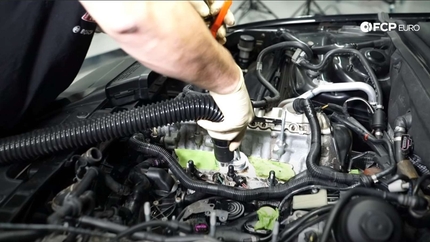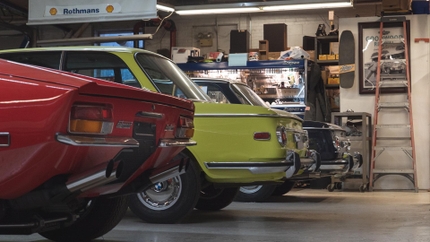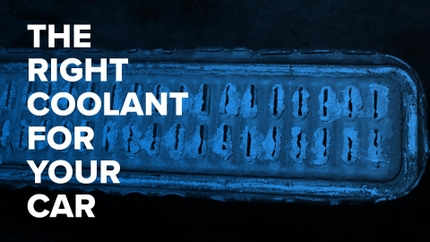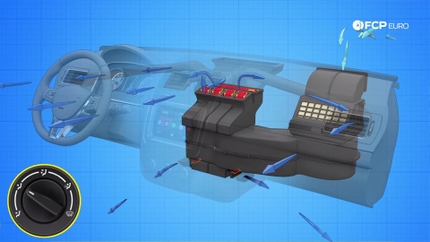- 12/03/2017
- 2 Min Read
- By: Dan Bullmore
How To Test The Vacuum Pods On A Mercedes-Benz W124

Here's what to do if the air conditioning isn't working on your W124 Mercedes.
Vacuum pods direct airflow through the HVAC system
Not having A/C caused much frustration for me with the brutal heat of Texas summer. The a/c system on these cars is complex and requires a little bit of study to fully understand, but one aspect in particular is a thorn in the side of many older Benz owners. I, of course, am talking about the vacuum pods that are employed to direct airflow through different parts of the A/C system. If your W124 has not had the dreaded “podectomy,” your vacuum pods' days are numbered. The actual replacement is a time consuming, though not extremely difficult job. In this article, I will show you the easiest way to test which of your pods are working and which are not. Of course, if one of your pods has failed, you will be dismantling the dash to replace it, and as such, I would recommend changing all of them while you're in there. This walkthrough will help you diagnose if you have any failed vacuum pods, as this is an important test if you find your A/C performance to be lacking. This walkthrough applies to W124 models without passenger airbag. If you have a passenger airbag, you will need to approach these components from underneath by removing the under dash panel. Take every precaution necessary to work safely near the airbag.
The pistons are prone to tearing after years of use
Firstly, an explanation is due. The A/C system in a W124 starts in a box that holds the condenser, and travels through lots of plastic ductwork to all of the different vents in the car. The flow to each set of vents is controlled by a door that is actuated with a vacuum piston. These pistons are made of rubber and are prone to tearing after years of use. This can cause your conditioned air to exit from vents that you do not desire. Frustrating as this is, it can also diminish your A/C performance by drawing in outside air rather than recirculating, or by blending heated air into your cooled air. A vacuum line from the engine enters the cabin through a hole in the firewall above the brake booster, and crosses the dash to reach a manifold behind the glove box. The manifold includes a solenoid block which is controlled by the A/C pushbutton unit in the dash. The solenoids direct the vacuum to the selected pods to open and close the appropriate doors. We will be using a Mityvac or similar handheld vacuum tool to test each individual pod.
Gaining access to the pods
We start by removing the glove box liner. This is accomplished by clearing out the glove box and using a flat tool to pop the rivets straight upwards. After removing the rivet, you will find that the rivet passes through another plastic fastener. You can pop these up the same way as the rivet. There are several of these around the rim of the glove box opening. Also, you will need to use a short philips head screw driver to remove the glovebox door striker. Once these are removed, you can shimmy the glovebox liner out of the way. The solenoid manifold is now clearly visible to the left hand side, with many hoses leading in and out.
We will first test the supply vacuum. Pull the line where it enters at the top of the solenoid manifold. Be very careful not to damage the hose or the manifold. Hook up your handheld vacuum pump and observe the gauge while starting the engine. The vacuum should climb quite rapidly and hold steady. If this is not the case, you will need to diagnose the vacuum line leading to the engine.
There might be a damaged pod or broken hose
Once vacuum supply has been established, you can shut the engine down, release the vacuum on your pump, and return the supply line to the manifold. Now you will pull each hose off the side one by one and use the handheld pump to draw a vacuum down each hose. Some of the vacuum pistons will require more pumping than others, but the important thing is to note that the vacuum pod holds vacuum. If one or more of the pods do not maintain the vacuum as you pump, or they bleed down rapidly, you may be looking at a damaged pod or a broken hose. Either way, you will need to pull the dashboard to assess. Identifying the pods is as follows:
- Red: Recirculation pod stage 1
- Green/Blue: Recirculation pod stage 2
- Red/Yellow: Footwell pod
- Red/Black: Dash center vent pod
- Red/White: Defrost vent pod stage 1
- Green: Diverter pod
- Red/Blue: Defrost pod stage 2

Of course, if all of your pods are functioning, but you are still not getting appropriate air at the chosen vents, you may have an issue with the dashboard pushbutton unit or with the solenoid block itself. Either one is a simple, and relatively inexpensive matter to replace.
I hope that you are lucky and find all of your pods to be functioning properly - this is a rare occasion as time wears on. Otherwise, after seeing which pods are non-functional, you can round up replacement parts and prepare for a labor of love that will only bring you closer to your W124. Or convince you to get rid of it.











